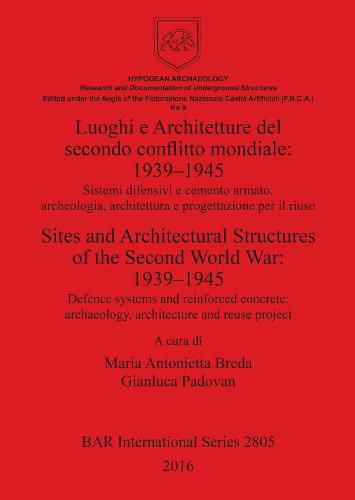Readings Newsletter
Become a Readings Member to make your shopping experience even easier.
Sign in or sign up for free!
You’re not far away from qualifying for FREE standard shipping within Australia
You’ve qualified for FREE standard shipping within Australia
The cart is loading…






This title is printed to order. This book may have been self-published. If so, we cannot guarantee the quality of the content. In the main most books will have gone through the editing process however some may not. We therefore suggest that you be aware of this before ordering this book. If in doubt check either the author or publisher’s details as we are unable to accept any returns unless they are faulty. Please contact us if you have any questions.
This third conference closes the cycle of three international scientific meetings that were held at the Polytechnic of Milan between 2011 and 2013. The initiatives were promoted to increase the knowledge of modern European military structures, to reflect on their condition and reuse, and to make proposals for their improvement and use. The first, held on 1617 November 2011, was dedicated to the sites and architecture of the Great War. The collected reports are published in Hypogean Archaeology series No. 7 (BAR International Series 2438/2012). In the second year we focused on the period between the wars. The reports submitted on 2728 November 2012 are published in Hypogean Archaeology series No. 8 (BAR International Series 2675/2014). In the third year, the meeting held on 1922 June 2013 debated the fortifications and works to protect civilians, both at the front and in city centres, during the Second World War; this book presents the results. The publications offer an effective contribution to the celebrations of the Great War that took place in Europe in 2015. The contributions of historians and critics, the experiences of recovery and the opening to the public of a number of military works outline the panorama of studies and concrete actions that enrich the historiography of architecture. They are also propose solutions for the careful preservation of the works.
$9.00 standard shipping within Australia
FREE standard shipping within Australia for orders over $100.00
Express & International shipping calculated at checkout
This title is printed to order. This book may have been self-published. If so, we cannot guarantee the quality of the content. In the main most books will have gone through the editing process however some may not. We therefore suggest that you be aware of this before ordering this book. If in doubt check either the author or publisher’s details as we are unable to accept any returns unless they are faulty. Please contact us if you have any questions.
This third conference closes the cycle of three international scientific meetings that were held at the Polytechnic of Milan between 2011 and 2013. The initiatives were promoted to increase the knowledge of modern European military structures, to reflect on their condition and reuse, and to make proposals for their improvement and use. The first, held on 1617 November 2011, was dedicated to the sites and architecture of the Great War. The collected reports are published in Hypogean Archaeology series No. 7 (BAR International Series 2438/2012). In the second year we focused on the period between the wars. The reports submitted on 2728 November 2012 are published in Hypogean Archaeology series No. 8 (BAR International Series 2675/2014). In the third year, the meeting held on 1922 June 2013 debated the fortifications and works to protect civilians, both at the front and in city centres, during the Second World War; this book presents the results. The publications offer an effective contribution to the celebrations of the Great War that took place in Europe in 2015. The contributions of historians and critics, the experiences of recovery and the opening to the public of a number of military works outline the panorama of studies and concrete actions that enrich the historiography of architecture. They are also propose solutions for the careful preservation of the works.